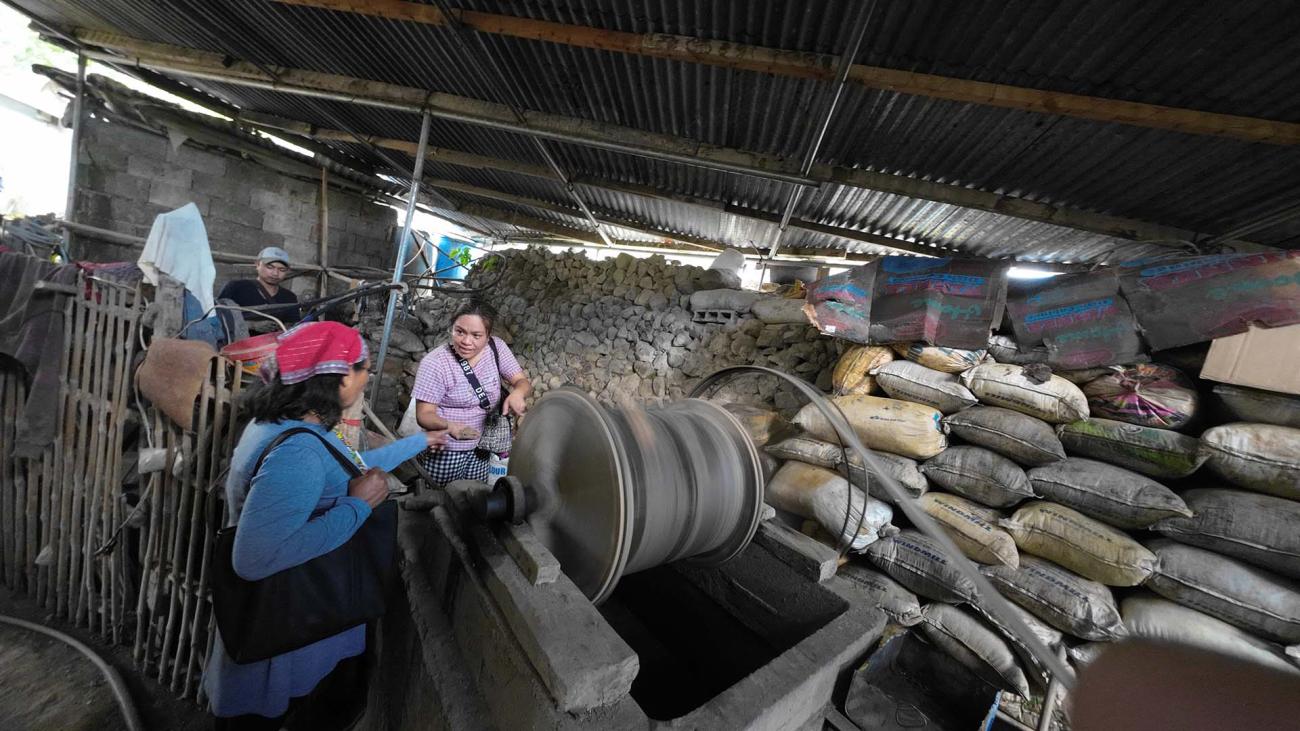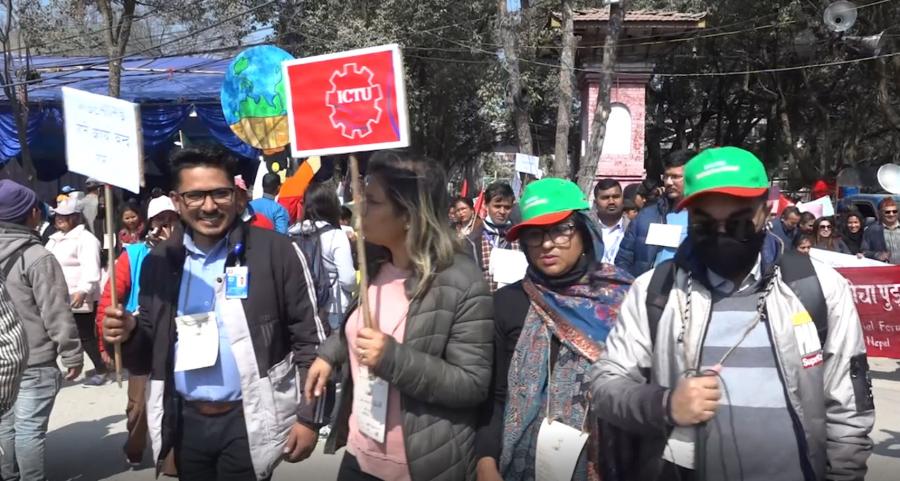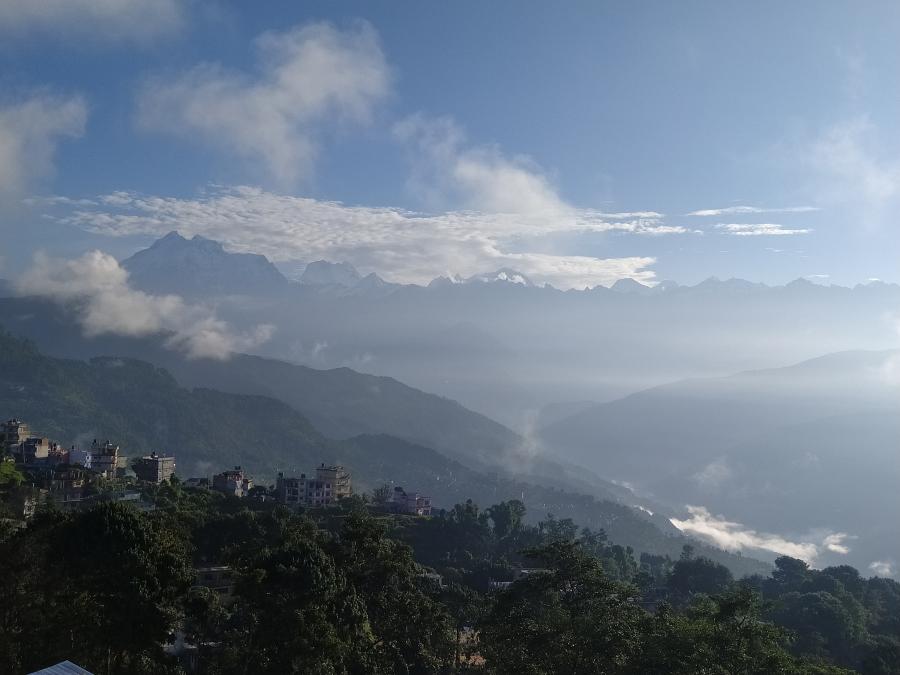
For more than a century, the Kankanaey and Ibaloy Peoples of Itogon, Benguet province in the Cordillera region of Northern Luzon in the Philippines have been waging a struggle against the injustices of large-scale corporate mining. As they continue to fight to reclaim their land, lifeways, and resources, they vow to keep fighting as long as it takes—generations, if necessary—until they are successful.
Benguet Corporation (formerly known as Benguet Consolidated, Inc.) is one of the oldest, top-producing gold mining companies in the world. Founded in 1903 by three Americans, Benguet initiated the first underground gold mining operations in Antamok in 1907. It expanded its operations into Acupan and Balatok in 1927, while simultaneously operating several large-scale mines in areas in and around Benguet where Indigenous Peoples had already been engaging in small-scale mining. At one point, as many as 15 mining companies were operating underground mines in Benguet province.
Over the last 120 years, large-scale gold mining has resulted in irreparable damage to the environment and local agriculture, creating severe threats to the lands, water sources, livelihoods, and way of life and displacing Kankanaey and Ibaloy Peoples from their ancestral land. For centuries, the Kankanaey and Ibaloy Peoples practiced small-scale gold mining and trade, along with rice-growing, farming, livestock raising, hunting, and foraging. Because of commercial mining activity, many of the access trails and small-scale mining claims have eroded or become vulnerable to erosion due to abandoned tunnels of the commercial mines, causing accidents, and in some instances, deaths.
Small scale mining area and also the site of the killer landslide in 2018 in Barangay Ucab.
None of the 15 mining companies operating in Indigenous territories truly rehabilitated the mined-out areas, instead abandoning their tailings ponds that contained heavy concentrations of toxic waste. Since underground mining relies heavily on timber, logging operations have resulted in further depletion of forest and water resources in the region. Trees and rivers have a special significance for the Kankanaey and Ibaloy, who believe that forests, rivers, and grasslands are a dwelling place for spirits.
Tailings dams were built across river beds in various parts of Benguet to contain the mine waste; Benguet Corporation alone built five tailings dams. Many of these were structurally unsound and incapable of containing the volume of tailings that originated from mills, leaking waste into the major river systems of the province. The agricultural productivity of these ancestral lands has been further compromised by flooding, as the dams impeded the free flow of runoff to the lowlands and forced silt deposits back upstream.
There are more than 1.2 million people belonging to seven distinct Indigenous Peoples in the Cordillera region—the Kankanaey, the Bontoc, the Kalinga, the Ifugao, the Tingguian, the Apayao or Isneg, and Ibaloy—collectively known as Igorots. Prior to colonization by Spain (1521) and the United States (1898), following the Spanish-American War, records reveal that Indigenous Peoples held land and had their own methods and knowledge of managing resources, governed by traditional chiefs. Most of the Indigenous lands that were minable, especially in Benguet province, were simply given to mining companies and individuals who then started mining operations. When the Philippines gained independence in 1946, the government maintained ownership of these lands rather than returning it to the Indigenous Peoples to whom it had belonged. The development projects implemented in these areas exploited their resources without the communities' prior knowledge and consent.
In 1989, after 86 years of underground mining and following the depletion of high-grade gold ores, especially in the Antamok mine, Benguet Corporation began open-pit bulk mining operations. The open-pit mining disturbed ancestral burial grounds and further destroyed water sources, backyard gardens, and farms. The communities most affected by the gold mining activities, especially the Kankanaey and Ibaloy, vehemently opposed the projects. They formed alliances and began creating barricades and protest marches. Benguet Corporation eventually suspended its operations in 1998 due to strong community opposition.
Tailings storage facility No-3 (Phase 3) by Benguet Corporation.
Buoyed by their success, throughout the 1980s, Indigenous Peoples in the Cordillera region began to unite and stand fiercely against Benguet Corporation. Villagers stormed Benguet’s field offices, wielding bolos and farm tools to protest blasting that was destroying homes, and eventually succeeding in pressuring the Department of Environment and Natural Resources to take action. The subsequent investigation found that Benguet had failed to inform residents before blasting or to compensate affected residents.
Despite strong opposition from residents, Benguet Corporation continued its open-pit mining in Itogon. But people continued forming barricades at various open-pit mining sites, with women and children often at the forefront while the men engaged in other campaigning activities. In the 1980s, Benguet Corporation expanded its open-pit mining with Keystone in the village of Ucab, issuing notices to residents to vacate as it moved its operation to upper Ucab. Communities continued to unite, and protests turned violent in the 1990s with numerous barriers erected around the open-pit mines.
Benguet Corporation asserted in 1992 that the barricades built by villagers were costing them 1 million Philippine pesos per day, and in retaliation, accused 200 locals of making severe threats and had arrest warrants issued for them. The villagers were charged with violation of the Presidential Mineral Resources Development Decree No. 463, and the courthouse became the next venue for protest. The case was eventually dismissed in 1994 after Benguet withdrew its complaint.
The children of Ucab formed a group called the Anti-Open-Pit Mining Kids, performing plays and songs of struggle during the protests. “I was then [only 10 years old] studying in grade 4. I joined to create barricades and form a cultural group to show the impact of large-scale mining. That is how I led the movement. Today I am the mother of three kids, but I am still continuing the movement,” says Rima Mangili (Eboloi), Deputy Secretary General of the Cordillera Peoples Alliance Provincial Chapter. “We have lost our rivers, our mountains have been destroyed, and also our source of livelihood. We are continuing to protest against the company until our rights over our ancestral land with title is secured, because we can feel and experience the effect caused by the Benguet Corporation. We continue our struggle for the sake of our children and their future,” she says.
Killer landslide in 2018 at Barangay Ucab1-Antamoc mine.
According to Mangili, every year there are landslides caused by mining tunnels. Houses and churches are sinking, with more and more disasters each year. Indigenous Peoples are demanding companies to pay for the destruction they have caused, give back their land, provide compensation for the damage they have caused, and to rehabilitate the region. Mangili says that while Benguet Corporation has a mining patent on their lands, the Kankanaey and Ibaloy Peoples still have an inherent right to it because it is their ancestral territory.
In 1992, a group of Indigenous communities filed a complaint against Benguet Corporation in the second International Water Tribunal held in the Netherlands. The tribunal called for Benguet to stop the open-pit mines, which were destroying the Antamok River and violating the rights of the Indigenous Peoples there. A similar complaint was also filed in the Permanent Peoples Tribunal held in Bhopal, India the same year. The tribunal found Benguet Corporation guilty of violating International Human Rights law.
The effort was successful in halting the expansion of Benguet Corporation's open-pit mines in the villages of Ucab, Tuding, and Virac, but it was unsuccessful in stopping the activity in Camote Vein in Loakan. When gold deposits were exhausted in Camote Vein, Benguet abandoned the site, leaving a significant hole in the earth. Even after it was formally shut down in 1998, the Grand Antamok Project, Benguet Corporation’s open-pit mine in Barangay village, also in Loakan, continued to pose a threat to the environment. The pit contains a substantial body of mining waste and is equally dangerous for the potentially harmful consequences on the shallow agricultural fields and the metal oxides that remain behind. The river system is still being filled with mining waste, so when it rains, the tailings pond overflows, and the nearby towns live in fear of being flooded by toxic waste.
In the early 1980s, out of these life-and-death struggles for the defense of their ancestral land, a confederation of grassroots organizations of Indigenous Peoples of the Cordillera was established. In 1984, the Cordillera Peoples Alliance began launching regional campaigns for the recognition of Indigenous Peoples’ rights. In 1997, the Indigenous Peoples Rights Act was passed, aiming to recognize, protect, and promote the rights of Indigenous Peoples, including their right to Free, Prior and Informed Consent.
“We Indigenous Peoples hoped that the law would help in the protection of our ancestral land and facilitate land titling and promotion of our cultural beliefs and traditions, so as to pursue our right to self-determination and give [us] an opportunity to participate in all matters affecting our ancestral land. However, to this day we have not been able to realize any of these rights,” says Windel Farag-ey Golinget, chairperson of the Cordillera Peoples Alliance.
In the early 2000s, Benguet Corporation started subcontracting its operations to small-scale miners, and in 2003, the company offered to supply the city with water that would primarily come from the company's mining operations. It proposed to establish a water reservoir at the open-pit mine site in Antamok, a purifying plant in Barangay Tuding, and distribution tanks in Ucab and Tuding, with some of the water to be distributed to Itogon households. But its water project did not gain community approval. When the plan was rejected, Benguet proposed turning the site into a landfill and also attempted to venture into real estate by converting parts of their mining patent into an economic zone.
“We will continue to struggle until the end of our life, and for generations. This is our land and this is our place, we were born here,” says Merlyn Waclin (Kankanaey), chairperson of Piggin Womens’ Association. “We Indigenous Peoples are suffering the impact. We have no potable water, our rivers have been polluted. Because of big tunnels, our houses cracked and sank. There are tunnels and holes everywhere. We live under threat; when there is rain, we can’t sleep. We are here to protect our land, resources, and livelihood.”
Indigenous Peoples in the area hold the long history of underground mining by the Benguet Corporation responsible for the soil subsidence and irreversible loss of life brought on by manmade disasters. Significant mining disasters have also occurred across the Itogon region.
In 2009, a typhoon struck, resulting in massive landslides in Sitio Luneta in Loakan when a diversion tunnel ruptured. The Ambalanga and Liang Rivers were poisoned and became waste canals as the company flushed its mine wastes into the rivers. In 2016, heavy rain from another typhoon caused a breach in the drain tunnel and a leak in Liang Tailings Dam, where tons of leakage flowed and further contaminated the Agno River.
After a typhoon struck Barangay Virac, Itogon in 2016, enormous sinkholes caused by the Benguet Corporation’s tunnel beneath a populated hillside swallowed seven homes and wrecked a number of others. After establishing a danger zone around the hole and relocating 166 households, the Itogon administration warned that many of the nearby homes were in danger of being buried by the sinkhole.
When a typhoon struck the Philippines again in 2018, a tragic landslide occurred in Ucab village. According to reports, 97 people died while many more went missing, and whose bodies were never recovered. Numerous houses collapsed and people were buried alive. Massive landslides also occurred in various other places near the mines, including Barangay Ampucao, Loakan, Gumatdang, Poblacion, Ucab, and Virac. Following the incident in Ucab, the Mines and Geosciences Bureau Central and Regional Office, Cordillera Administrative Region, conducted geological and geohazard assessments and labeled these locations a danger zone.
Abandoned office of Benguet Corporation. It now serves as an ore processing facility by Benguet Corporation.
Mangili is concerned that calamities will strike again if the tunnels are not rehabilitated. She says that several of the abandoned tunnels have not been adequately backfilled, which presents a risk to the local population, particularly during heavy downpours, powerful typhoons, and earthquakes.
The Department of Environment and Natural Resources ordered the closure of 23 mines, including those operated by Benguet Corporation, on February 2, 2017, citing that these mining operations had caused “serious environmental violations, mainly to siltation of rivers, destruction of a functional watershed, and illegal tree cutting. No mining business is allowed to operate in a working watershed that safeguards water sources,” the statement continued. “Water is essential for life. We won't permit any commercial interest that might put the safety of our citizens' drinking water at jeopardy.”
At present, local communities in Itogon are not permitted to work in their small-scale mining tunnels without receiving a permit from the local government. Yet, locals continue in their small-scale farming, even if it is illegal, to pay for their children’s education and basic needs.
For the last several decades, Indigenous Peoples and local communities have continued their campaign to fight for justice and against the Benguet Corporation’s threat to further devastate the environment, and to end their control of the mineral resources in Itogon. They contend that Benguet’s enterprises exploit natural resources for their own gain while Indigenous Peoples suffer.
Benguet Corporation and other mining enterprises in the area must be held accountable for the suffering that local communities have endured for centuries, and they must return Itogon to the hands of its rightful owners, the Kankanaey and Ibaloy Peoples, and repair the harm they have caused to Itogon. Indigenous Peoples also demand that Benguet Corporation give them back their land, with title, and rehabilitate the area destroyed by mining activity. The government should also recognize and allow communities to operate small-scale mining and compensate the communities of Itogon for damages. True justice is not merely a stoppage of large-scale mining, but upholding their ancestral land rights and rebuilding their agricultural and traditional livelihood.
“For Indigenous Peoples, the land is life. The land is more than a source of livelihood. Thus, we are committed to pursue and continue campaigns against large-scale mining to make them uphold the rights and livelihoods of affected Indigenous communities, protection of the environment, and sustainable use of natural resources for their own development and welfare,” says Bestang Dekdeken, Secretary General of Cordillera Peoples Alliance. “We shall continue to strengthen the capacity of Indigenous Peoples to defend ancestral lands and be vigilant of the affected communities and continue raising awareness, advocacy, and lobby work at the local, national, and international levels.”
All photos by Dev Kumar Sunuwar.


